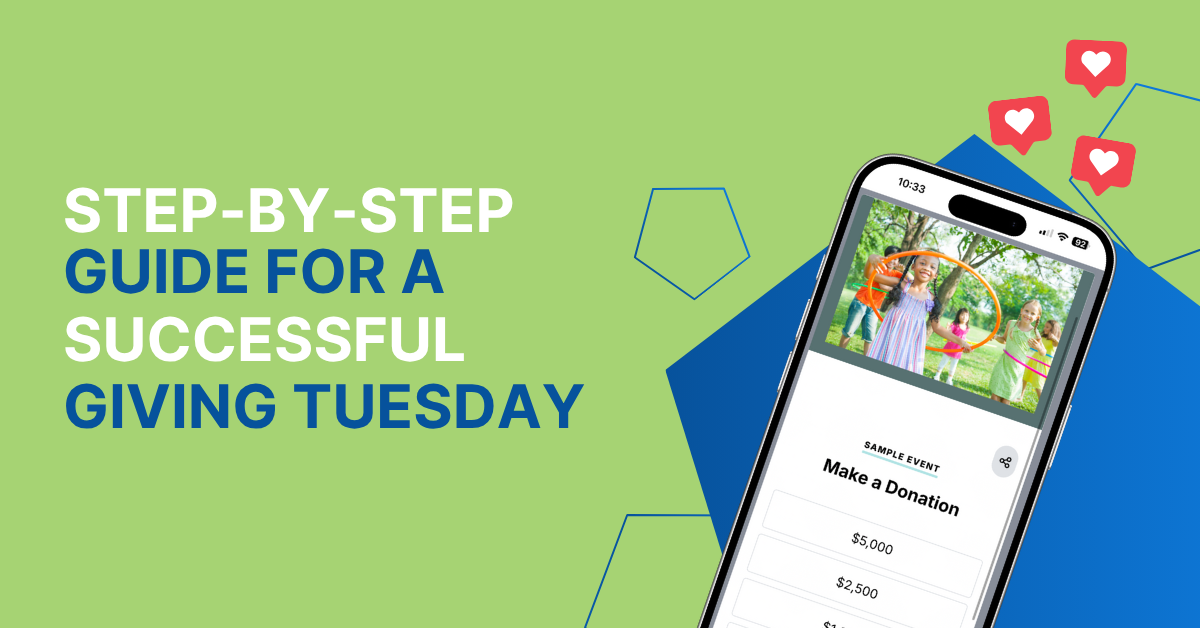
Social Media Strategies for Nonprofits: A Short Guide
November 18, 2022
Nonprofits must have well-designed marketing strategies to promote their mission, volunteer opportunities, virtual fundraisers, their next auction event, and more. Many organizations start with email as the backbone of this strategy, and not without reason. Email is the classic way to send messages directly to individual supporters.
However, another common platform for outreach nowadays is social media. More and more, nonprofits leverage the various social media platforms to reach different audience members, and effectively! Feathr’s social media guide cites that 82% of Americans currently use social media sites, a statistic that has consistently grown over the past decade.
In this guide, we’ll discuss social media and the steps necessary to develop your nonprofit’s social media strategy, including:
- Set goals for your social media strategy.
- Choose your social platforms.
- Set a social media content calendar.
- Encourage supporter participation.
Social media is no longer a new strategy for nonprofit organizations. In fact, it’s an established and necessary aspect of nonprofit marketing. Create and hone your social media strategy with these essential steps.
Set goals for your social media strategy
The first step to establishing any marketing strategy is to set goals for your organization. Only with effective goals can you define what success looks like for your strategy and then plan effective tactics.
Some of the goals you might set for a social media strategy include the following:
- Dollars raised through social platforms. Most social media platforms allow your organization to add a donation button or fundraising options. If you choose to add this as a part of your social media strategy, you might set a specific dollar amount raised as one of your primary goals.
- Event registrations coming through social media. Nonprofits often use social media to promote their event activities. In this case, your organization will likely measure the number of registrations that come through social media sites as one of your ambitious event marketing goals.
- New supporters gained through social outreach. Social media is also used to gain access to a new supporter base. Your organization can use it to connect with new supporters and to get them acquainted with your cause. In this case, you might measure the number of new supporters gained through social outreach as a primary goal for your organization.
When you set your goals, consider your upcoming campaigns and initiatives as well as your consistent marketing efforts. Then, make sure you set a concrete number to be met as a part of your goal. This should also be attached to a specific time frame.
For example, rather than saying, “Our goal is to reach more donors through Facebook,” a better goal might be, “Our goal is to gain 100 new donors through Facebook outreach over the next month.”
Choose your social platforms
There are several considerations you need to take into account when you choose the social media platforms that you’ll use to reach your audience. It’s better to have a few platforms in your strategy that are well built out rather than overwhelming your team with more platforms than they’re able to keep up with.
Different platforms tend to have different audiences and different types of content that succeed on them. Here are some of the platforms you might consider:
- Facebook. Generally, Facebook is most popular among users ages 25 to 34. It has features like groups that allow you to gather supporters together and it lends itself well to long-form text content.
- Instagram. Instagram is used by the same age group as Facebook, but it’s also very popular among those 18 to 24 years old. Traditionally, it was used as an image-sharing platform but has slowly become more popular for videos called reels and stories.
- LinkedIn. Almost 1 in 5 U.S. users of LinkedIn are 18 – 29 years old. LinkedIn provides a professional network that allows you to build credibility, create a meaningful network, and establish an industry authority.
- TikTok. 60% of users on TikTok are between the ages of 16 and 24. This younger audience tends to prefer the short-form video-centric content offered on this platform.
- Twitter. Most Twitter users are between the ages of 25 and 34. The 140-character limit allows your organization to post short text updates for your audience. This platform is also the best way to reach politicians, making it a natural fit for advocacy campaigns.
Once you’ve chosen the platforms that will most appeal to your audience and portray your message, you can start developing your marketing ideas for these various platforms. For example, you might use Twitter as the primary platform to promote your upcoming advocacy campaign, especially if that campaign involves Tweeting a representative.
Set a social media content calendar
Once you’ve determined which platforms you’ll use, you can start scheduling your social media content calendar. Set up a calendar that outlines the messages and posts you’ll use on each platform. Keep in mind that you’ll need to use different types of messages depending on what you’re promoting and the types of messages the platform facilitates.
Posts
Posts are the content you publish on your profile, allowing your organization to express an idea that will be shared and saved on your social wall. You can tell lengthy stories on Facebook or share individual photos on Instagram that will last on your profile forever (unless they’re deleted).
If you’re promoting a specific initiative through your social media strategy, don’t forget to add a link back to the landing page on your website. For example, if you’re hosting an upcoming auction event, you might link back to your registration page, making it easy for supporters to sign up to attend.
Videos
Videos are especially important on social platforms nowadays. They’re not only used for long-form content that can be shared in Facebook posts but they can also be used on TikTok and Instagram reels to promote your cause.
Consider recording short clips at your program sites or at your organization’s event. These clips can make for great content that can be used for future posts and reels. You can even ask other supporters or influencers to support your organization by reposting these videos or by creating their own.
Ads
Ads are a great supplemental tool for nonprofits to get in front of more audiences. Your organization can launch a nonprofit advertising campaign that displays your ads on your supporters’ social walls.
You can use the parameters around age, interests, and more available through social media platforms to create lookalike audiences for these ad campaigns as well. This allows your organization to get ads in front of new audiences that have similar qualities as your existing audience, increasing the chances they’ll engage with your mission.
Encourage supporter participation
One of the best parts of social media is that it enables two-way communication between your nonprofit and your supporters. You can encourage your audience to get involved with your social media posts.
Encourage them to take action by:
- Inviting responses in the comments of your posts.
- Thanking them when they like your posts and images.
- Hosting contests at events to see who will post pictures or follow your organization first.
- Setting hashtags for supporters to use on images and posts related to your nonprofit’s mission.
- Encouraging followers to post images when they wear your custom merchandise.
These types of actions can not only help you engage with your followers but also help you gain new followers in the process! The more others engage with your content, the more likely it will show up higher on other people’s social feeds.
Don’t forget this is just one way to gain new followers on social media sites. You can also use ads with a lookalike audience or NPOInfo recommends looking into social media appends. These are two ways to find your existing supporters and encourage them to engage with your cause on social platforms.
Once you’ve developed your social media strategy, you should continue tracking numerous metrics associated with the strategy. In addition to tracking engagement metrics and success metrics, your organization should also keep an eye on the information you collect about individuals. Individual data will help you bolster relationships with your followers and create a sustainable outreach strategy.
Get The Latest Updates
Subscribe To Our Monthly Newsletter
No spam, notifications only about new products, updates.
Become a subscriber
Subscribe to our blog and get the latest updates straight to your inbox.

